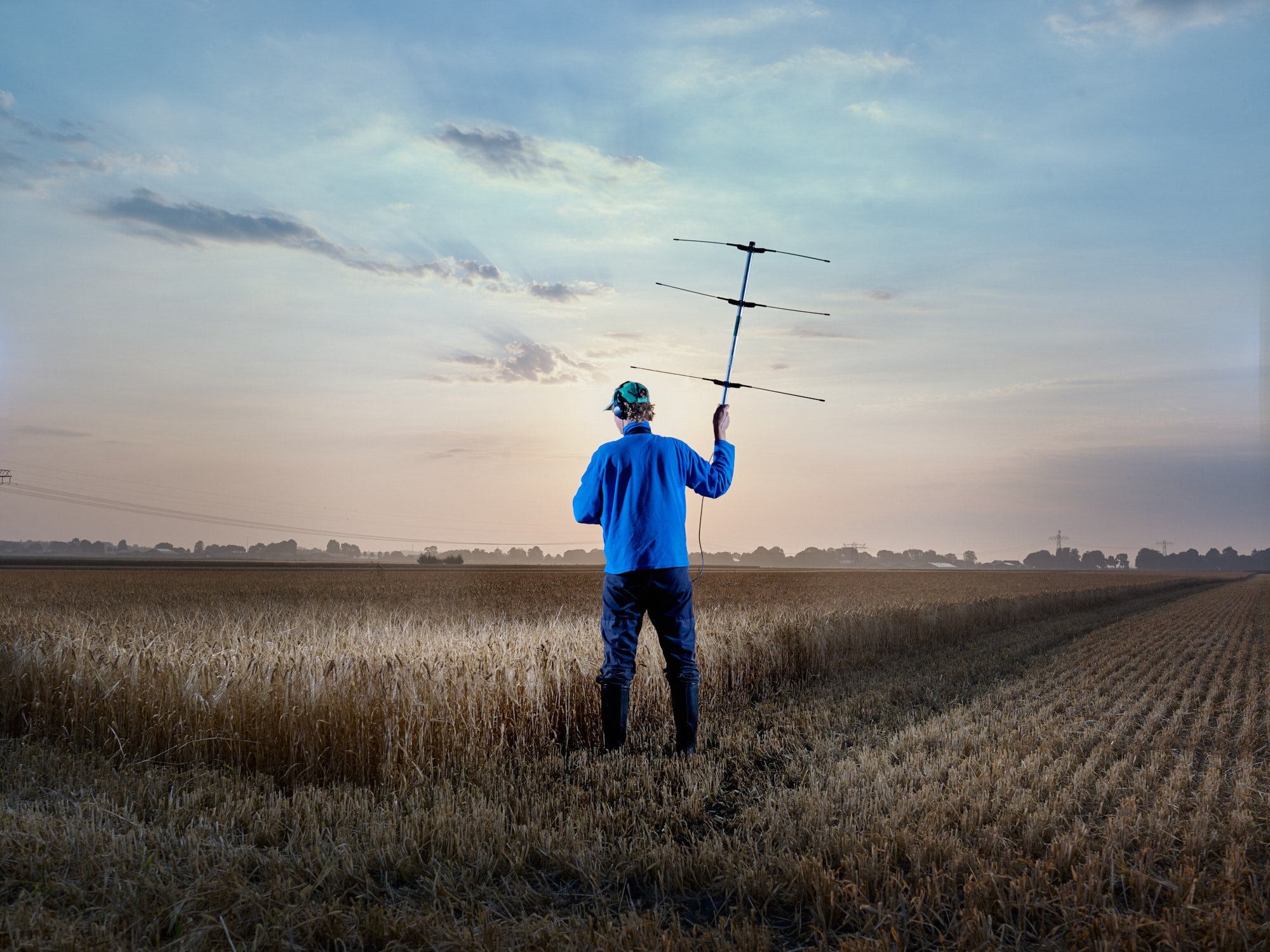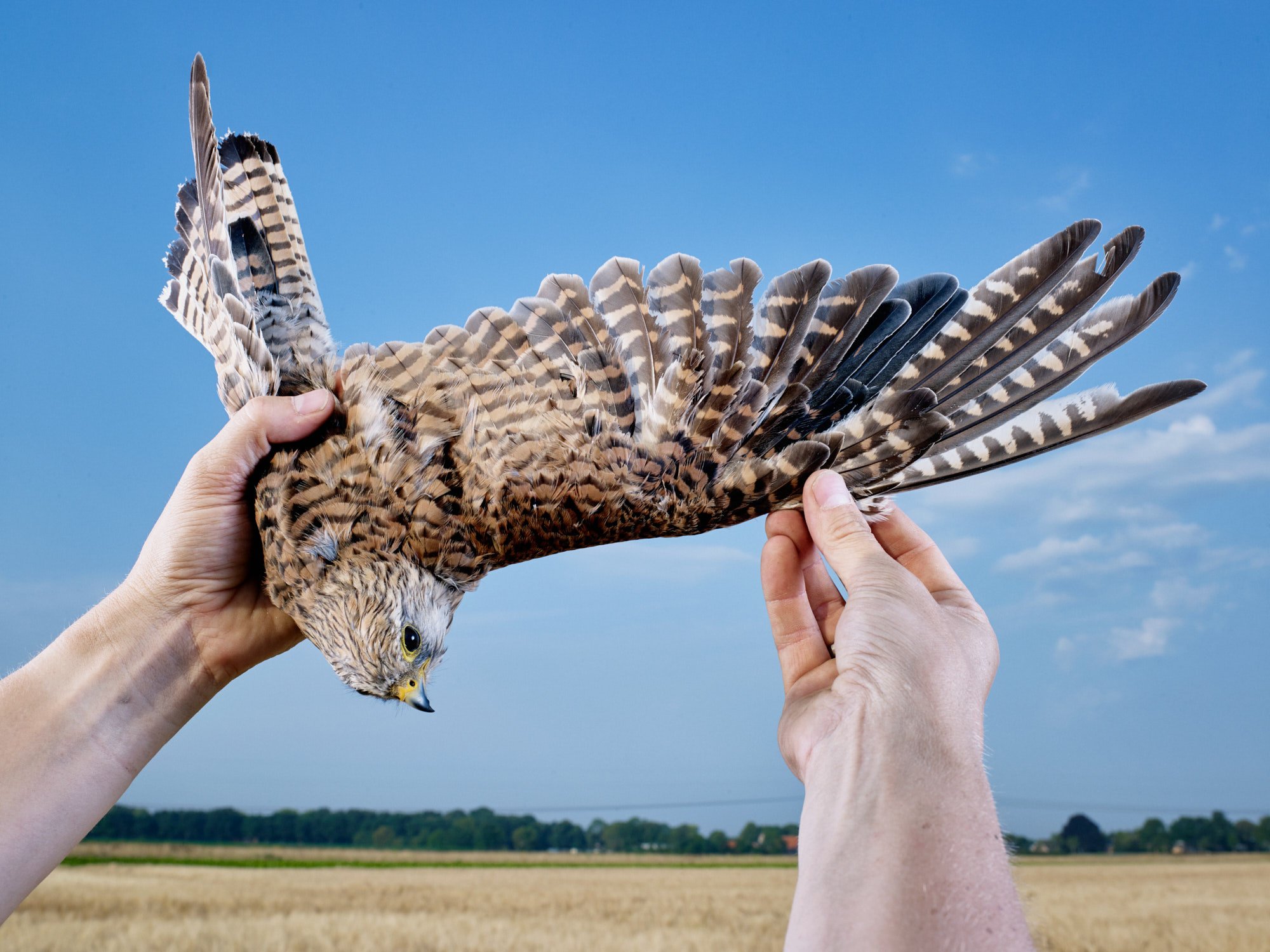COLLECTIVE LANDSCAPE

The collective landscape (2018-2022) started out as a collaboration with the University of Groningen (RUG) and the Noorderlicht Foundation. Each year they ask a photographer to depict a research area relating to the Noorderlicht festival-theme in the frame of the "imaging science" series. For the 2018 episode Hartmann documented the research of several professors from this university investigating landscape, nature, agriculture and ecosystems. Thanks to the generous support of the MIAP foundation in 2020, it was possible to continue with this concept and develop it further by collaborating with several institutes in the Netherlands like the University of Wageningen and the Royal Netherlands Institute for Sea Research (NIOZ).
Hartmann started documenting scientific fieldwork on natural ecosystems in the Netherlands since 2018. The project was inspired by the concept of “The Collective Landscape” defined by the British landscape architect Sir Geoffrey Jellicoe. This designer was fascinated by how garden and landscape design can interact with many other disciplines, and saw the landscape as humanity’s common art form. Within this project, this aspect is emphasised by placing additional lighting in collaboration with the scientists who were conducting field research at these locations.
Ecologist Raymond Klaassen surveys transmitted Yellow Wagtails in the vicinity of Muntendam. Klaassen is affiliated with the GELIFES research institute of the University of Groningen.
Temporary Receiver near Vlieland. Researchers from the Royal Netherlands Institute for Sea Research (NIOZ) are conducting a large monitoring experiment around some of the island of the Wadden Sea, in which migratory birds are followed.
Fences in the Junner Koeland nature reserve near Ommen. To investigate plant diversity, different types of fences have been placed over a long period of time to exclude different grazing from cattle and horses
A green margin on the land of arable farmer Peter Harry Mulder. He regularly experiments with test fields on his land to see how he can arrange the land as insect and bird-friendly as possible. Successful farming, Mulder wants to show, benefits from biodiversity on, around and in the land.
Predator, A Kestrel checked and ringed during research in Groningen. These rings have a reference code inscribed on them that allows that particular bird to be uniquely identified if it is caught again in the future.
Selection. A laboratory at NIOZ in which birds are tested for behavior. After the test, Some of the birds are released with a WATLAS transmitter to investigate their exploration of the Wadden Sea.
Han Olff. Professor of Ecology and Nature Management working in one of the greenhouses of the University of Groningen. Olff researches biodiversity, nature management, nature conservation and sustainable landscapes in the Netherlands and abroad
Malaise Trap. Large insect trap on the Marker Wadden. A research group wants to find out, which insects are the first to settle in this new nature reserve and what influence this has on the further development of the ecosystem. An important question in this regard is the interaction between land and water.
Yellow Trap. Yellow sticky traps are a simple and common method to quickly obtain a picture of the biomass of insects at a particular location. The numbers of insects on the sheets are counted via automatic image recognition.
Theunis Piersma. Professor of Migratory Bird Ecology at the University of Groningen. Together with an international research team, he researches the way in which distribution and numbers of mudflat and meadow birds are related to climate, food, predators, pathogens and their historical-genetic background.
A large oak tree in the middle of an exclosure experiment has established itself within a fence that has ruled out cattle grazing. Only within these areas where these animals are excluded oaks can settle, showing that certain animals determine whether an area will eventually become forest or remain grassland.
Behavioral ecologist Allert Bijleveld and ecologist Roeland Bom are looking for wading birds on Richel, a sandbar near Vlieland. Both obtained their PhD from Theunis Piersma and now work at NIOZ, the Royal Netherlands Institute for Sea Research.
Markerwadden. In 2016, at the initiative of Natuurmonumenten, the construction of the Marker Wadden, an archipelago in the Markermeer, started. The aim is to create a large nature and recreation area that will have a positive effect on soil and water quality.
farmer Peter harry mulder on one his fields. For more than a decade Peter Harry and his wife works towards a sustainable practice. A healthy soil with resilient crops in an environment in which the arable flora and fauna can flourish. He takes part in one of the agri-environment cooperatives in the Netherlands.
The Wadden Sea was officially designated as UNESCO World Heritage. A number of plant and animal species found in the Wadden Sea are having difficulties. They threaten to disappear from the region due to overfishing and climate change.
Patches of cultivated seagrass at the coast of Uithuizen. This kind of grass is vital for the Wadden Sea and in similar shallow coastal seas all over the world. The grass retains the bottom, dampens waves and provides food and protection for all kinds of animals.
Scientist Selin Ersoy at a temporary cabin for testing bird behavior at the island of Griend. This research is part of the WATLAS project to investigate the way certain bird species explore the Wadden Sea.
GPS measurements of planted patches of cultivated seagrass near the island of Griend. Experiments are conducted to see what kind of base the grass needs to be able to settle itself in these shallow waters.
















